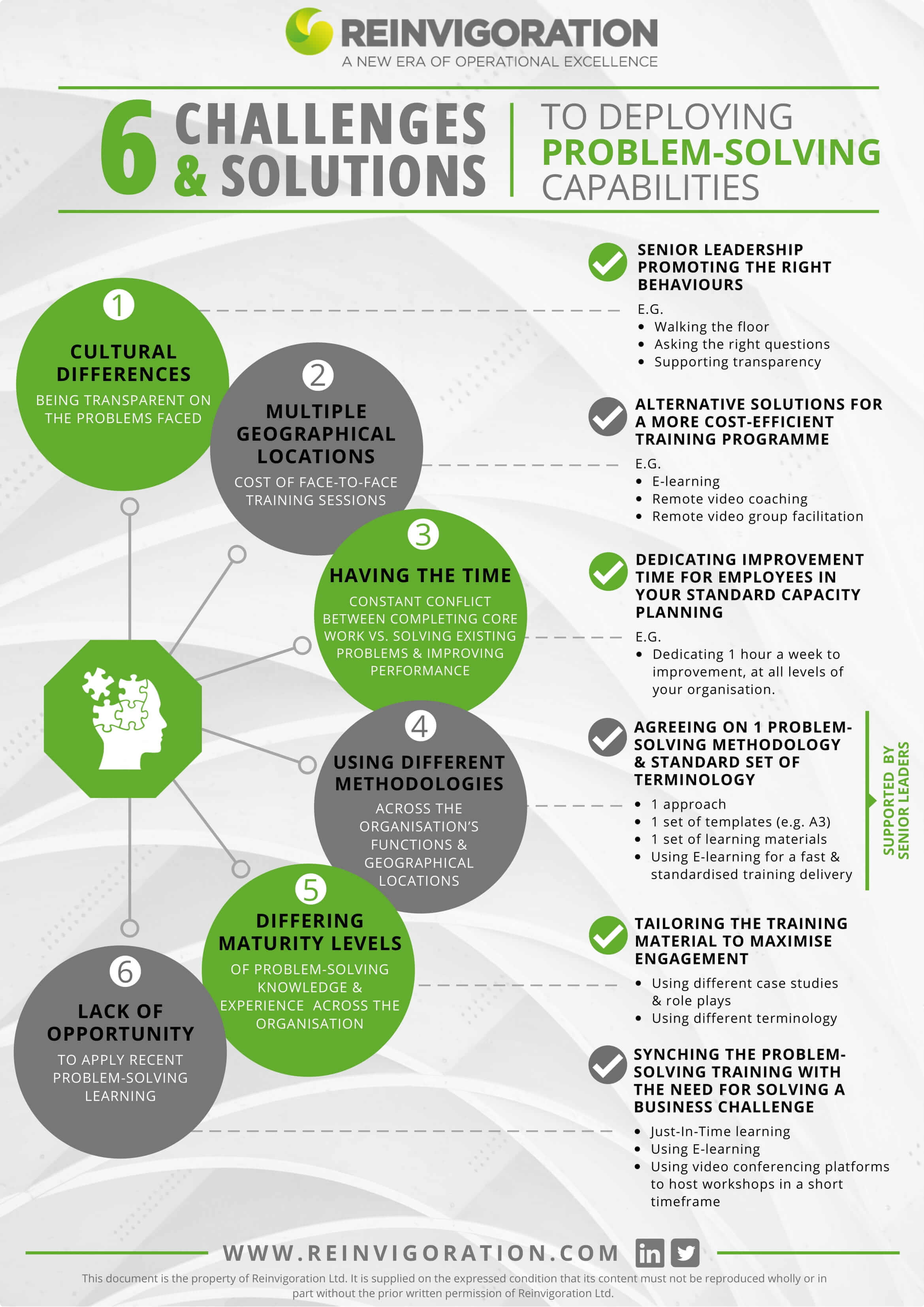The 6 Challenges to Successfully Deploying Problem-Solving Capabilities and How to Mitigate Them

In recent weeks, a number of people across my network have shared their aspirations to create a culture of continuous improvement; a key element of this is the successful deployment of problem-solving capability at each level of the organisation. Achieving this may not be as straightforward as one would expect. In this article, I will share some of the key challenges I have seen and some of the solutions available.

1. Cultural differences across the organisation
A key challenge to problem-solving is the transparency required in order to identify problems. Not every culture finds this comfortable. The key here is to ensure that senior leaders are supportive of the new problem-solving mentality and approach and that managers promote the right behaviours.


2. Multiple geographical locations of individuals and teams
It is now common to have teams split across various locations with little face-to-face interaction. This adds a layer of complexity when it comes to learning the problem-solving process both from a training and coaching perspective. eLearning is a great solution which can be accessed whenever required by an individual to learn the problem-solving methodology and the tools required from wherever they are. Following this initial learning course, a problem-solving workshop could be accessed remotely by multiple problem-solving team members across the organisation using a video conferencing platform.


3. Having the time to solve problems
Organisations often struggle with creating the headspace and time required to invest in problem-solving. It is rare that we plan dedicated improvement time for employees which means we need to take from our productive time. This means that there is a constant conflict between time to complete our core work, vs. time to solve existing problems and improve performance.


4. Different problem-solving methods used across the organisation
There are multiple methodologies available for problem-solving. In order for an organisation to promote problem-solving effectively it is necessary to standardise the approach, the tools and techniques, the templates and the learning materials. This way everyone is able to speak the same language and collaborate efficiently.


5. Differing levels of problem-solving maturity in different parts of the organisation
Problem-solving is one of the only improvement methodologies which is relevant to any department and any level of the organisation. We do however need to tailor training materials for the learners to be able to relate the approach to their workplace.


6. Lack of opportunity to apply recent problem-solving learning
Delivering learning needs to be synched with the need for solving a business challenge so that the individual is enabled to practically use the new learning and develop competence. There are ways in which we can expose employees to the problem-solving process quickly and effectively as well as bring a group of employees together to solve problems.
E-learning for example is a great solution for just-in-time learning on problem-solving methodology and tool set. It can be accessed remotely as and when required. Video conferencing platforms can also be used for hosting problem-solving workshops to bring together a group of colleagues in a short time frame.

In conclusion
More than ever problem-solving remains a key improvement tool which can enable huge performance improvement. Ideally organisations will possess problem-solving capability at all levels and the methodology and tools will be used as the daily norm.
Whenever you are looking at deploying problem-solving capability within your organisation, bear in mind that to be successful, you will need to ensure that your Senior Management Team promotes transparency and that the organisation invests in the time required to solve problems at all levels of the hierarchy.
Standardisation of the problem-solving methodologies used is another key element to consider as having multiple methodologies and terminology can confuse people when working together. Finally, don’t underestimate the importance of just-in-time learning and of using the right technology to enable remote learning and collaboration between your different departments and geographical locations. Find out more about our approach to problem-solving.

